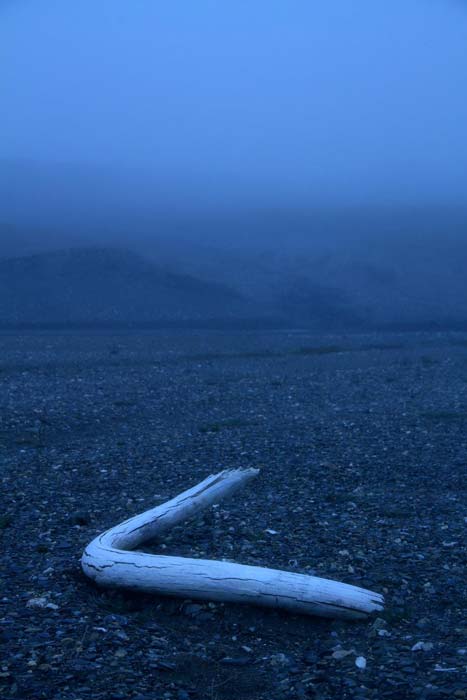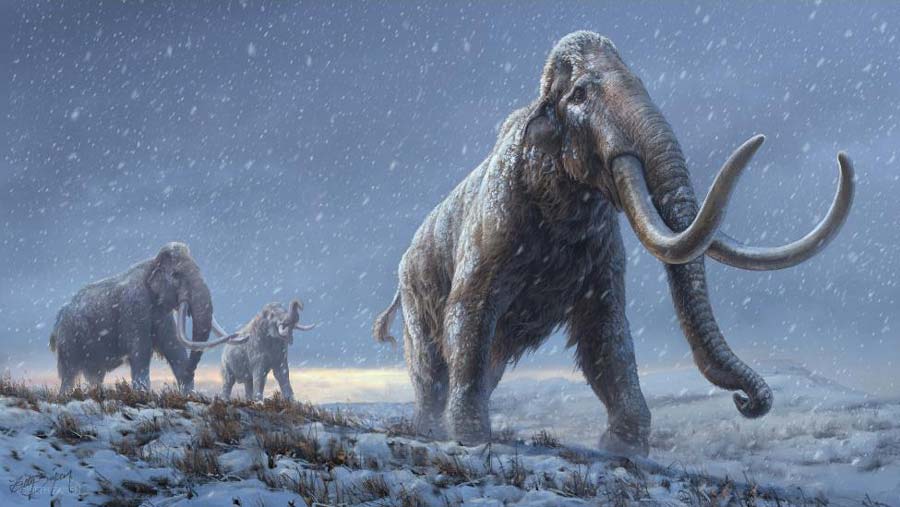Mammoth DNA Breaks Record for World’s Oldest Sequence
Researchers have sequenced the oldest known DNA in the world. Using material from the Early and Middle Pleistocene sub-epochs, the ancient DNA analysis shatters the record for the world’s oldest sequenced DNA. It comes from mammoth remains that were discovered in the Siberian permafrost and proves that under the right conditions ancient DNA can survive more than one million years.
But the analysis of that very ancient DNA depends upon researchers having the right technology too. Thankfully, an international team led by researchers at the Centre for Palaeogenetics in Stockholm, Sweden had advanced sequencing technology and bioinformatics available to them. A Nature news report for the new paper says that the researchers pushed current technology almost to its limits to enable the extraction of ancient DNA strands from mammoth teeth that had been preserved in the Siberian permafrost. Senior author of the Nature study, Love Dalén, a professor of evolutionary genetics at the Centre for Palaeogenetics, notes that the scientific team has been lucky, saying:
“It’s not like everything found in the permafrost always works. The vast majority of samples have crap DNA.”
How the Ancient Mammoth DNA has Broken Records
The discovery is truly amazing because after an organism dies its chromosomes gradually become smaller and smaller, and in most cases extremely ancient DNA strands have become so tiny that they have lost all their informational content. But a new article published in the journal Nature shows that the team has managed to obtain 49 million base pairs of nuclear DNA from a 1.65-million-year-old tooth found near a village called Krestovka (the tooth has been dubbed Krestovka as well). They also extracted 884 million base pairs of ancient DNA from a 1.3-million-year-old tooth they refer to as Adycha and 3.7 billion base pairs of DNA from a 600,000-year-old woolly mammoth tooth they’ve called Chukochya. The three mammoth remains were discovered in the 1970s and are part of the collection of the Russian Academy of Sciences in Moscow.

Love Dalén and co-lead author Patrícia Pečnerová with a mammoth tusk on Wrangel Island. (Credit: Gleb Danilov)
The Nature news report explains that the ancient mammoth DNA study hasn’t uncovered the oldest biomolecular information from the fossil record – that’s protein sequenced in 2016 from 3.8-million-year-old ostrich eggshells from Tanzania. In second place is a protein sequence from a 1.77-million-year-old rhinoceros tooth from Georgia, which was analyzed in 2019. However, while protein is hardier and can survive in extremely old fossils from places without permafrost, it isn’t as useful as DNA for researchers who want to study an organism’s ancestry.
- Did Man and Mammoth Ever Live in Harmony? Not Quite…
- Amazing New Siberian Mammoth Remains May Lead to Cloning Breakthrough
- Is This Proof Early Man Weaponized Ivory from Woolly Mammoth Tusks to Kill...Woolly Mammoths?
That’s just one of the reasons why the new mammoth DNA study is so important – it contains genetic information which hasn’t been available in the older protein samples.
A second reason why the study is making headlines is that it has beaten ancient DNA from a genome from a 560,000 to 780,000-year-old horse leg bone found in the Yukon Territory of Canada for the oldest ancient DNA sequence. Putting the age of the mammoth samples into context, Dalén said:
“This DNA is incredibly old. The samples are a thousand times older than Viking remains, and even pre-date the existence of humans and Neanderthals.”
The First Example of Hybrid Speciation in Ancient DNA
The new study has also amplified the ability for researchers to track the evolutionary process of speciation – the formation of new and distinct species. A Nature press release states that this process generally occurs “over time periods that are thought to be beyond the limits of DNA research.”

A tusk from a woolly mammoth discovered in a creek bed on Wrangel Island in 2017. (Credit: Love Dalén)
Nonetheless, the scientists’ study of the mammoth DNA suggests that there was not one, but two different lineages of mammoth alive during the Early Pleistocene in the region of what is now eastern Siberia. Adycha and Chukochya are believed to be members of a species that spawned the woolly mammoth, but Krestovka appears to come from an unknown, and possibly entirely new, mammoth lineage. Tom van der Valk, the study’s lead author and a bioinformatician at the University of Uppsala in Sweden, explains the researchers’ shock at this discovery:
“This came as a complete surprise to us. All previous studies have indicated that there was only one species of mammoth in Siberia at that point in time, called the steppe mammoth. But our DNA analyses now show that there were two different genetic lineages, which we here refer to as the Adycha mammoth and the Krestovka mammoth. We can’t say for sure yet, but we think these may represent two different species.”
In their study, the researchers suggest that the Krestovka genome may have diverged from the other mammoths between 2.66 to 1.78 million years ago. They also believe that this mammoth lineage “was ancestral to the first mammoths to colonize North America.” It appears that the North American Columbian mammoths ( Mammuthus columbi) can trace half of their ancestry to wooly mammoths and half to the previously unrecognized Krestovka mammoth lineage.
The Nature news report states that this means the new study has also provided the first evidence for ‘hybrid speciation’ – a new species forming through mixing - found in ancient DNA. Study co-lead author Patrícia Pečnerová, an evolutionary biologist at the Swedish Museum of Natural History, says that the team believes “that the Columbian mammoth, one of the most iconic Ice Age species of North America, evolved through a hybridisation that took place approximately 420 thousand years ago.”
How Far Back Can Researchers Go?
Finally, the ancient mammoth DNA study has inspired Dalén to analyze more permafrost animal samples that date back more than a million years. Next on his list? Musk oxen, moose, and lemmings. But the professor of evolutionary genetics knows that there is an age limit he won’t be able to cross when analyzing the ancient DNA - 2.6 million years - “That’s the limit of the permafrost. Before that, it was too warm,” he says.

Woolly mammoth tusk emerging from permafrost on central Wrangel Island, located in northeastern Siberia. (Credit: Love Dalén)
Top Image: The illustration represents a reconstruction of the steppe mammoths that preceded the woolly mammoth, based on the genetic knowledge we now have from the Adycha mammoth. Source: Beth Zaiken/Centre for Palaeogenetics
By Alicia McDermott




















